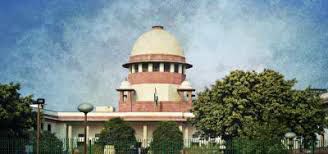Role Of Microfinance In India
This research article underlines the role of microfinancing in the present time
in India. It act as an anti-poverty vaccine in rural India. In a developing
country like India, this is the well-known fact that much of the Indian
population still resides in rural area with lack of facilities and knowledge and
have minimum amount of money to meet their basic needs.
According to the report of the 2018 of World population this is the well-known fact that much of the Indian population still resides in rural area with lack of facilities and knowledge and have minimum amount of development indicator, complied with officially recognised source is 65.97%. . India the second largest populated country where 60% of the population work in agriculture sector, consequently which leads to underemployment and that in consequence further leads to low income per capita.
The income earned is too low that it is not sufficient for the people to meet with their basic needs. The role of microfinancing plays a vital role in the lives of small businessmen in urban areas and entrepreneurs in under developed parts of India, and the people living in rural areas. The people of rural areas have very low access to the institutionalized credit, So microfinancing works as a boon for the people living in rural areas which help them to have stability with respect to their financial issues.
Introduction
Microfinance is defined as , financial services such as savings account, insurance funds , and credit provided to poor and low income clients so as to help them increase their income , thereby improving their standard of living.1 The basic feature of the microfinance is that these are the loans given without security.
Another pioneer in this sector is Akhtar Hameed khan. At that time a new wave of microfinance initiatives introduced many new innovations into the sector. Many pioneering enterprises began experimenting with loaning to the poor people. The main reason why microfinance is dated to the 1970s is that the programs could show that people can be relied on to repay their loans and that is possible to provide financial services to poor people through market based enterprise with subsidy. ‘Shorebank was the first microfinance bank founded in 1974 in Chicago.
Today the World bank estimates that more than 16 millon are served by some 7000 microfinance institutions all over the world. In a gathering at a Microcredit Summit in Washington DC the goal was reaching 100 million of the world's poorest people by credit from the world leaders and majorv financial institutions.
The year 2005 was proclaimed as the International year of Microcredit by the economic and social council of the united nations in a call for the financial and building sector to fuel the strong entrepreneur spirit of the people around the world.
There were five major goals of The International Year of Microcredit. Those were:
Microfinance in India plays a major role in the development of India. It act as an anti-poverty vaccine for the people living in rural areas. It aims at assisting communities of the economically excluded to achieve greater level of asset creation and income security at the household and community level. The utmost significance of microfinance in India is that it dispenses the access to the capital to small entrepreneurs. As it has been discussed above that microfinance in India is providing loans, insurance, access to savings accounts.
The concept of microfinance focuses on women also by granting them loans. It act as a tool for the empowerment of poor women as women are becoming independent, they are able to contribute directly to the well beings of their families and are able to confront all the gender inequalities. The major targets of microfinance are the poor rural and urban households and women too. The Reserve Bank Of India imparts no ceiling with respect to minimum and maximum amounts to be given as loan.
Credit is important to the poor people for maintaining the common imbalance in between the income and their expenditure. It is also vital to the poor people for the income generating activities like investing in marginal farms and other small scale self employment ventures. Their access to formal banking channels are low due to the lack of resources an nature of formal credit institutions. Consequently in India, Microfinance institutions and self help groups are leading to other traditional banking channels as they are catering the need of credit to poor people. It has contribute a lot in enhancing the quality of life of the poor people.
Therefore microfinance is not a financial system but a tool to allievate poverty from the country and bring social change and especially to uplift the status of women in our country so they can become self reliance. There is a public interest the interest of microfinance and this is what makes it acceptable as valid goal for public policy.
Concluding Remarks
As we all know financial institution are the integral part of our economy as it plays key role in economic development. Therefore, India financial institution are very strong but operations of the same are adverse, somewhere we are lacking in its implications. However micro finance plays the major role in the alleviation of poverty from the society. Many banks in India have initiated to lend money to the micro finance institution. It works towards the empowerment of women which is the great move towards the development of the country.
According to the report of the 2018 of World population this is the well-known fact that much of the Indian population still resides in rural area with lack of facilities and knowledge and have minimum amount of development indicator, complied with officially recognised source is 65.97%. . India the second largest populated country where 60% of the population work in agriculture sector, consequently which leads to underemployment and that in consequence further leads to low income per capita.
The income earned is too low that it is not sufficient for the people to meet with their basic needs. The role of microfinancing plays a vital role in the lives of small businessmen in urban areas and entrepreneurs in under developed parts of India, and the people living in rural areas. The people of rural areas have very low access to the institutionalized credit, So microfinancing works as a boon for the people living in rural areas which help them to have stability with respect to their financial issues.
Introduction
Microfinance is defined as , financial services such as savings account, insurance funds , and credit provided to poor and low income clients so as to help them increase their income , thereby improving their standard of living.1 The basic feature of the microfinance is that these are the loans given without security.
Micro finance includes the following products:
- Microloans:
Microfinance loans are significant as these are provided to borrowers with no collateral. The end result of microloans should be to have its recipient outgrow smaller loans and be ready for traditional bank loans.
The importance of Micro loans is that it is provided with no collateral. The borrower is not bound to pledge something as a security for repayment of the loans. It offers a better overall loan repayment rate than traditional banking product.it enhance the possibility of future investments as it is a sustainable process. Most importantly it gives people a soothing and non stressful life.
- Microsavings:
Micro savings accounts allow entrepreneurs operate savings account with no minimum balance.These accounts help users inculcate financial discipline and develop an interest in saving for future.
The importance of microsavings are that the poor people and small businessman with low income can operate their account with no minimum balance. These accounts do not bound people to maintain their accounts with certain amount of money in it.
- Microinsurance:
Microinsurance is a type of coverage provided to borrowers of microloans. These insurance plans have lower premiums than traditional insurance policies.
The importance of microinsurance is that it is the machinery to protect the poor people from all the mishap that might take place in furture, example : Acidents, chronic disease etc. It addresses to all kind of risks that people of low income group or poor people face globally.
Facet Of Microfinance
Some of the important features of Microfinance are listed below:- Microfinance do not require any collateral
The keystone feature of the microloans under microfinance is that it does not require any collateral. The borrowers is not.
- The borrowers are generally poor people.
The purpose of microfinance is to lend a helpful hands towards needy people. So generally the borrowers of microfinance are the people belonging to underdeveloped part of India and Small businessmen or entrepreneurs.
- the money which can be availed under microfinance are usually the small
amount. For instance Microloans.
The money given in the form of microloans under microfinance to the poor section of the society and small businessman are usually in a small amount ranging in between 20,000 – 30,000rs in India.
- The loan tenure is short
The tenure of the loan is really short as the amount given in the form of microfinance is too small. The borrowers have to repay the amount the of loan in the prescribed time period given by the banks. If it is not pbound to pledge anything as a security for the repayment of the loans. They need not worry about the assets that are required to be kept in banks for security purpose.
- The purpose of microfinance loans is to generate income
As it is well known that microfinance loans are only given to low income group people and small businessmen. So the main focus of microfinance loans is to generate income for the the poor people of undeveloped part of India so they can work smoothly.
History Of Microfinance
The history of Micro-financing can be traced back as long as to the middle of the 1800s when the theorist Lysander Spooner was writing over the benefits for small credits to entrepreneurs and farmers as a way getting people out of the poverty. But it was at the end of world war2 with the Marshall plan the concept had an big concept. The word microfinance has its roots in 1970s when organisations such as Grameen Bank of Bangladesh with the microfinance pioneer Mohd.Yunus, where starting and shaping the modern industry of microfinancing .Another pioneer in this sector is Akhtar Hameed khan. At that time a new wave of microfinance initiatives introduced many new innovations into the sector. Many pioneering enterprises began experimenting with loaning to the poor people. The main reason why microfinance is dated to the 1970s is that the programs could show that people can be relied on to repay their loans and that is possible to provide financial services to poor people through market based enterprise with subsidy. ‘Shorebank was the first microfinance bank founded in 1974 in Chicago.
Today the World bank estimates that more than 16 millon are served by some 7000 microfinance institutions all over the world. In a gathering at a Microcredit Summit in Washington DC the goal was reaching 100 million of the world's poorest people by credit from the world leaders and majorv financial institutions.
The year 2005 was proclaimed as the International year of Microcredit by the economic and social council of the united nations in a call for the financial and building sector to fuel the strong entrepreneur spirit of the people around the world.
There were five major goals of The International Year of Microcredit. Those were:
- To promote the contribution of microfinance to the microfinance institutions.
- The promotion should be inclusive the financial sector.
- Make a supporting system for sustainable assess to financial services.
- Support strategic partnership by encouraging new partnerships and innovation to build and expand the outreach and success of microfinance for all.
Importance Of Microfinance In India
The concept of microfinance has been highlighted since 1970s with an aim to uplift the poor section of the society and to enhance economic growth. Its importance has been amplified amidst global financial crisis when trust into formal banking system is shaken.Microfinance in India plays a major role in the development of India. It act as an anti-poverty vaccine for the people living in rural areas. It aims at assisting communities of the economically excluded to achieve greater level of asset creation and income security at the household and community level. The utmost significance of microfinance in India is that it dispenses the access to the capital to small entrepreneurs. As it has been discussed above that microfinance in India is providing loans, insurance, access to savings accounts.
The concept of microfinance focuses on women also by granting them loans. It act as a tool for the empowerment of poor women as women are becoming independent, they are able to contribute directly to the well beings of their families and are able to confront all the gender inequalities. The major targets of microfinance are the poor rural and urban households and women too. The Reserve Bank Of India imparts no ceiling with respect to minimum and maximum amounts to be given as loan.
Credit is important to the poor people for maintaining the common imbalance in between the income and their expenditure. It is also vital to the poor people for the income generating activities like investing in marginal farms and other small scale self employment ventures. Their access to formal banking channels are low due to the lack of resources an nature of formal credit institutions. Consequently in India, Microfinance institutions and self help groups are leading to other traditional banking channels as they are catering the need of credit to poor people. It has contribute a lot in enhancing the quality of life of the poor people.
Therefore microfinance is not a financial system but a tool to allievate poverty from the country and bring social change and especially to uplift the status of women in our country so they can become self reliance. There is a public interest the interest of microfinance and this is what makes it acceptable as valid goal for public policy.
Channels Of Microfinance
There are two channels through which microfinance is being operate in India:- SHG-Bank Linkage programme (SBLP) – In the year 1992 NABARD initiated this channel. This model incites women to unite together to form a group of 10-15 members. Where all the women belonging to financial backward classes contributes by giving their individual savings to the group at regular intervals. Thereafter, loans are provided to the members of the group by their contributions. Self-help groups {SHG} also at later stage provide loans for income generating activities.
Microfinance Institutions
The primary operation of these type of institutions is to have the provision of microfinancing. They lend through the concept of joint liability i.e a group of 10-15 members who seeks loans either jointly or individually.Microfinance Companies In India
Some of the microfinance companies that offer loans to the unbanked and under banked population in India as are follows:- Arohan financial banks
- BSS microfinance pvt ltd.
- Cashpor microcredit
- Equitas microfinance pvt ltd
- Asirvad microfinance pvt ltd
- Bandhan financial services pvt ltd.
- Disha microfin pvt ltd
- Annapurna microfinance pvt ltd
- Esaf microfinance and investments pvt ltd
- Fusion microfinance pvt ltd
Lenders Offering Microfinance Loans To Mfis Institutions
Following are the lenders offering microfinance loans to the microfinance institution:- Reliance Money- Reliance company at the great rate of interest
offers money to microfinance institutions. The required documentation is
very limited.
- ICICI Bank– Since last 10 years ICICI Bank has been a partner with
the micro finance institutions and is successfully provide the loan to them.
Currently the ICICI BANK is clearly focusing on setting up a profitable and
cordial relation with microfinance institutions and also in the investing which
can enable the growth of microfinance institutions in India.
- State Bank of India - The state bank of India offers loans to the
micro finance institutions and NGOs that act as intermediaries for financing
the financial needs of poor sector of society.
- AXIS Bank - Axis bank offers loans to those institutions that
economically empower the small businessmen and low income earners.
- DCB Bank - Development Credit Bank offers two types of product as part of micro financing these are term loans and loans to microfinance institutions for on lending purposes.
Concluding Remarks
As we all know financial institution are the integral part of our economy as it plays key role in economic development. Therefore, India financial institution are very strong but operations of the same are adverse, somewhere we are lacking in its implications. However micro finance plays the major role in the alleviation of poverty from the society. Many banks in India have initiated to lend money to the micro finance institution. It works towards the empowerment of women which is the great move towards the development of the country.
Law Article in India
Legal Question & Answers
Lawyers in India - Search By City
LawArticles
How To File For Mutual Divorce In Delhi

How To File For Mutual Divorce In Delhi Mutual Consent Divorce is the Simplest Way to Obtain a D...
Increased Age For Girls Marriage

It is hoped that the Prohibition of Child Marriage (Amendment) Bill, 2021, which intends to inc...
Facade of Social Media

One may very easily get absorbed in the lives of others as one scrolls through a Facebook news ...
Section 482 CrPc - Quashing Of FIR: Guid...

The Inherent power under Section 482 in The Code Of Criminal Procedure, 1973 (37th Chapter of t...
The Uniform Civil Code (UCC) in India: A...

The Uniform Civil Code (UCC) is a concept that proposes the unification of personal laws across...
Role Of Artificial Intelligence In Legal...

Artificial intelligence (AI) is revolutionizing various sectors of the economy, and the legal i...








Please Drop Your Comments